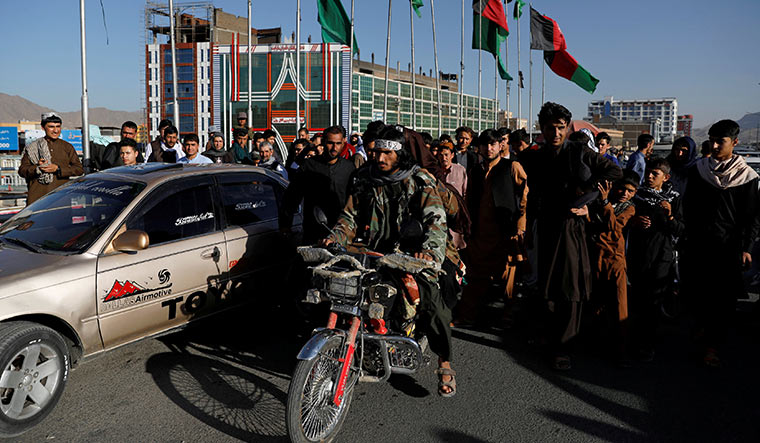IT IS DIPLOMAT season in India. Among the flurry of meetings that will keep South Block officials busy, it would be easy to miss the significance of the back-to-back visits of Hamdullah Mohib, Afghanistan’s national security adviser; Javad Zarif, the Iranian foreign minister; and Zalmay Khalilzad, the US’s special representative for Afghanistan reconciliation.
Afghanistan stands at a crucial juncture, facing just two choices—civil war or peace. Seventeen years after the war began, there is no end in sight. And the talk about a post-US scenario is no longer hypothetical. President Donald Trump, who is running out of patience, is reportedly planning to reduce troops in Afghanistan, like in Syria.
It is one of the longest wars America has fought. But the Taliban now controls more territory than they did since the war began. A quarterly report by the Special Inspector General for Afghanistan Reconstruction, prepared for the US congress, indicates that the Afghan government controls only 55.5 per cent of the country’s districts. This is the lowest since November 2015. The government had begun with 72 per cent.
The fight to retain control comes at a great cost. Reports submitted to the Afghan parliament indicate that, on an average, 40 Afghan security personnel die every day.
India has invested deeply in Afghanistan’s stability. With the pullout of American troops looming, India will naturally be expected to play a bigger role. “Part of my effort, being here in India, is to ensure that you are fully abreast of what is going on in [the talk] process,” Mohib told THE WEEK.
Mohib is not alone in wanting to keep India in the loop. Afghanistan will figure in Zarif’s India agenda. Iran recently became the latest to join the ‘talk to the Taliban’ bandwagon, with its foreign office holding official talks with the Taliban leaders last December. Iran wants to push the Taliban towards intra-Afghan talks.
Trump may joke about India building libraries in Afghanistan, but it is evident that stability in the region needs Indian participation. Khalilzad’s long-pending visit makes this clear. He will try and convince India that the talks will lead to peace; may nudge India to put boots on the ground.
The question now is, who will tame the Taliban and how? Whether Khalilzad can bring about peace in Afghanistan is debatable. The fourth round of peace talks were recently cancelled, because the Taliban refused to sit opposite the Afghan government.
Breaking the deadlock will not be easy. Khalilzad had wanted to successfully conclude the peace talks by April this year, but the ambitious deadline now appears unrealistic. “We have been fighting this war for the past 17 years,” said Mohib. “More than 1,00,000 Afghans have died or been martyred. Peace is difficult; we should not put a deadline on peace.”
The bigger worry for India is Pakistan. If the Taliban were to come to power, after being legitimised by the political process, India would find itself in a tricky situation. Especially so if Pakistan continues to control the Taliban.
There are experts who say that the Taliban’s rise to power could pose an existential question for Pakistan. But, as things stand, a win for the Taliban would be a dream come true for Pakistan’s Inter-Services Intelligence. And that is why India needs to step up its diplomatic offensive.


